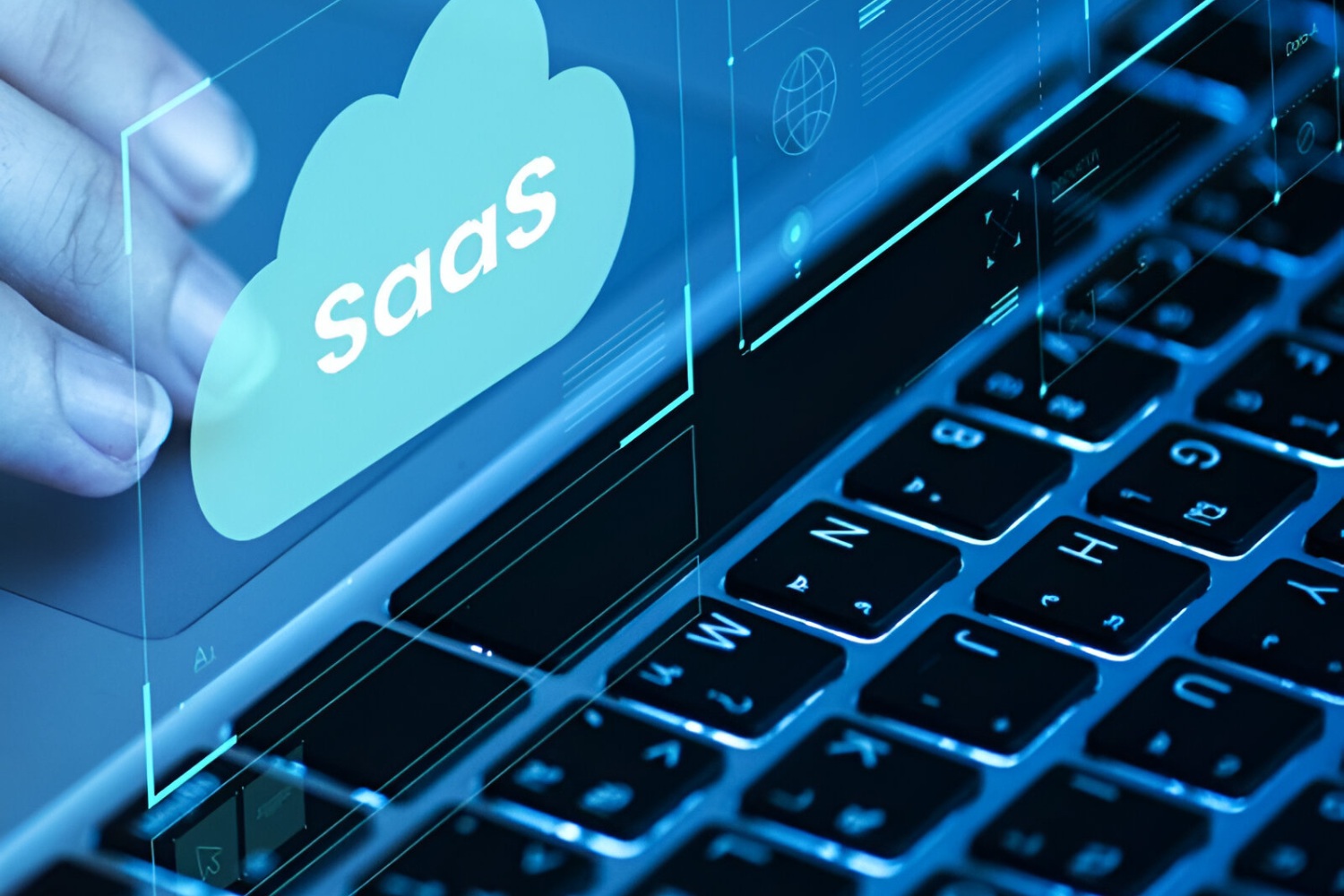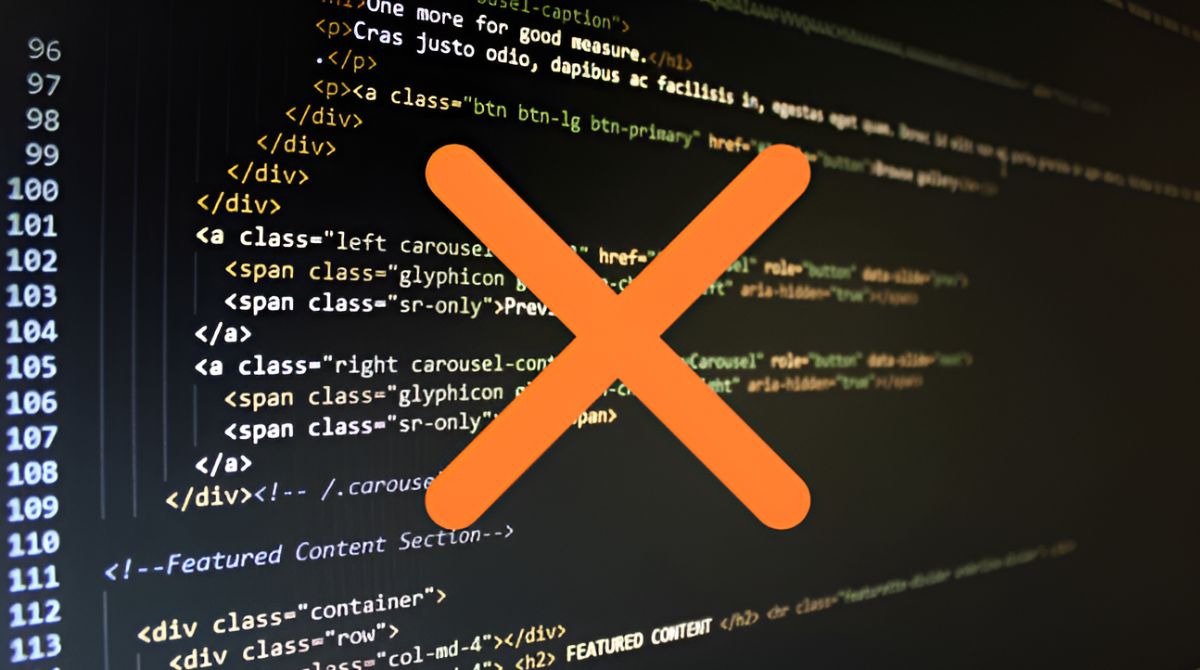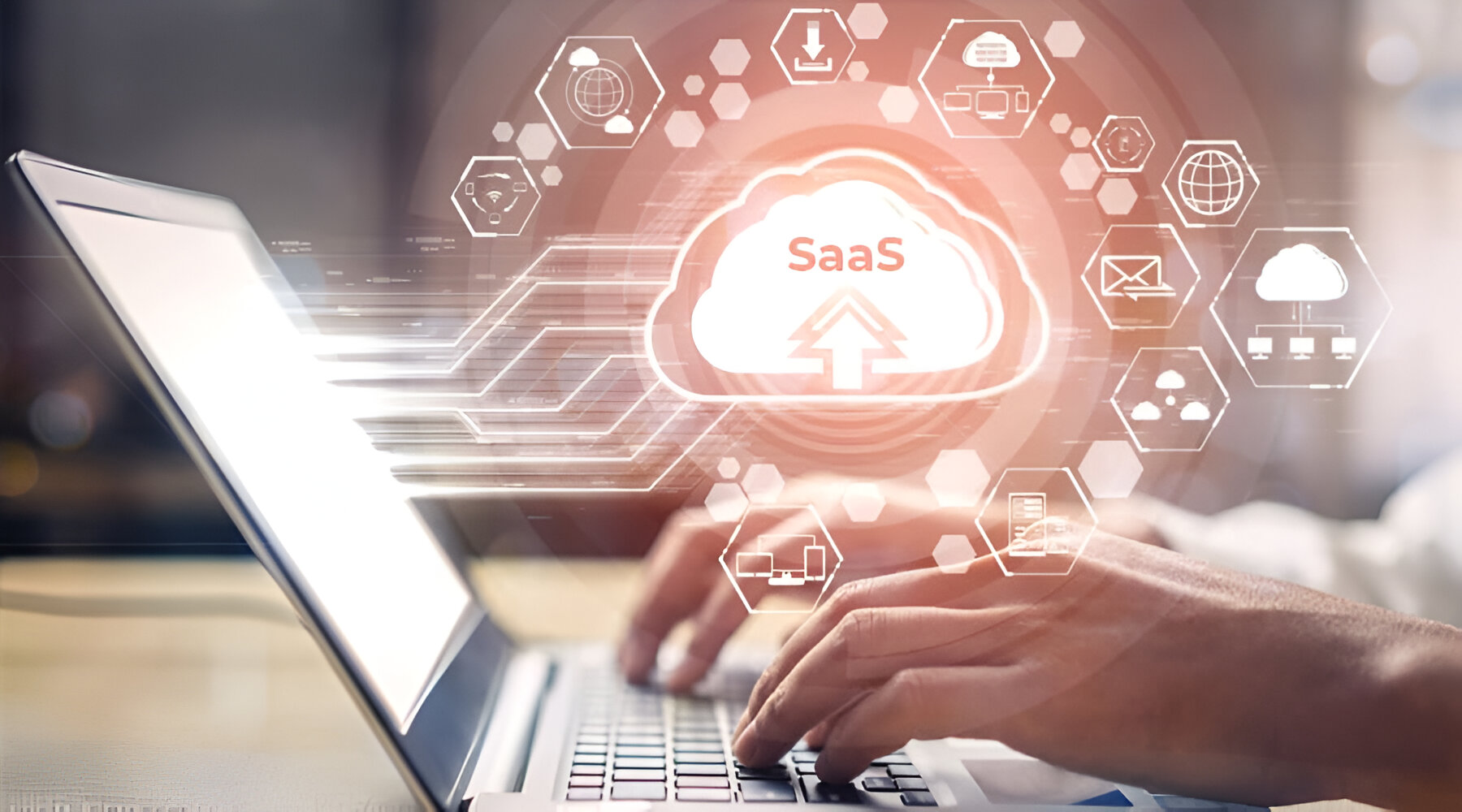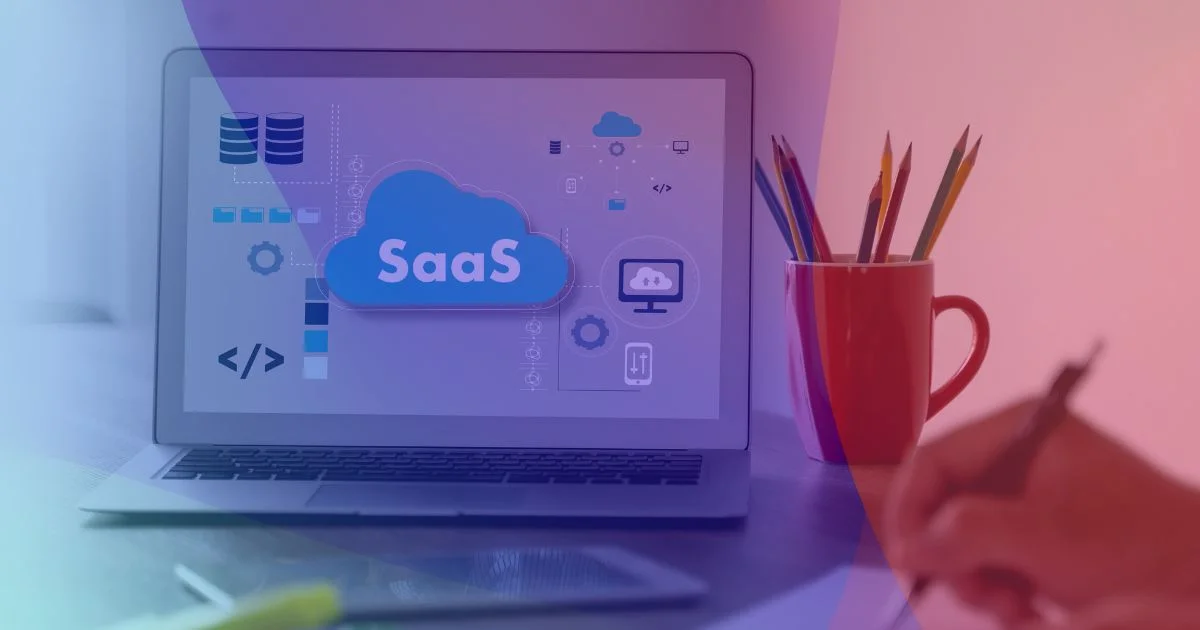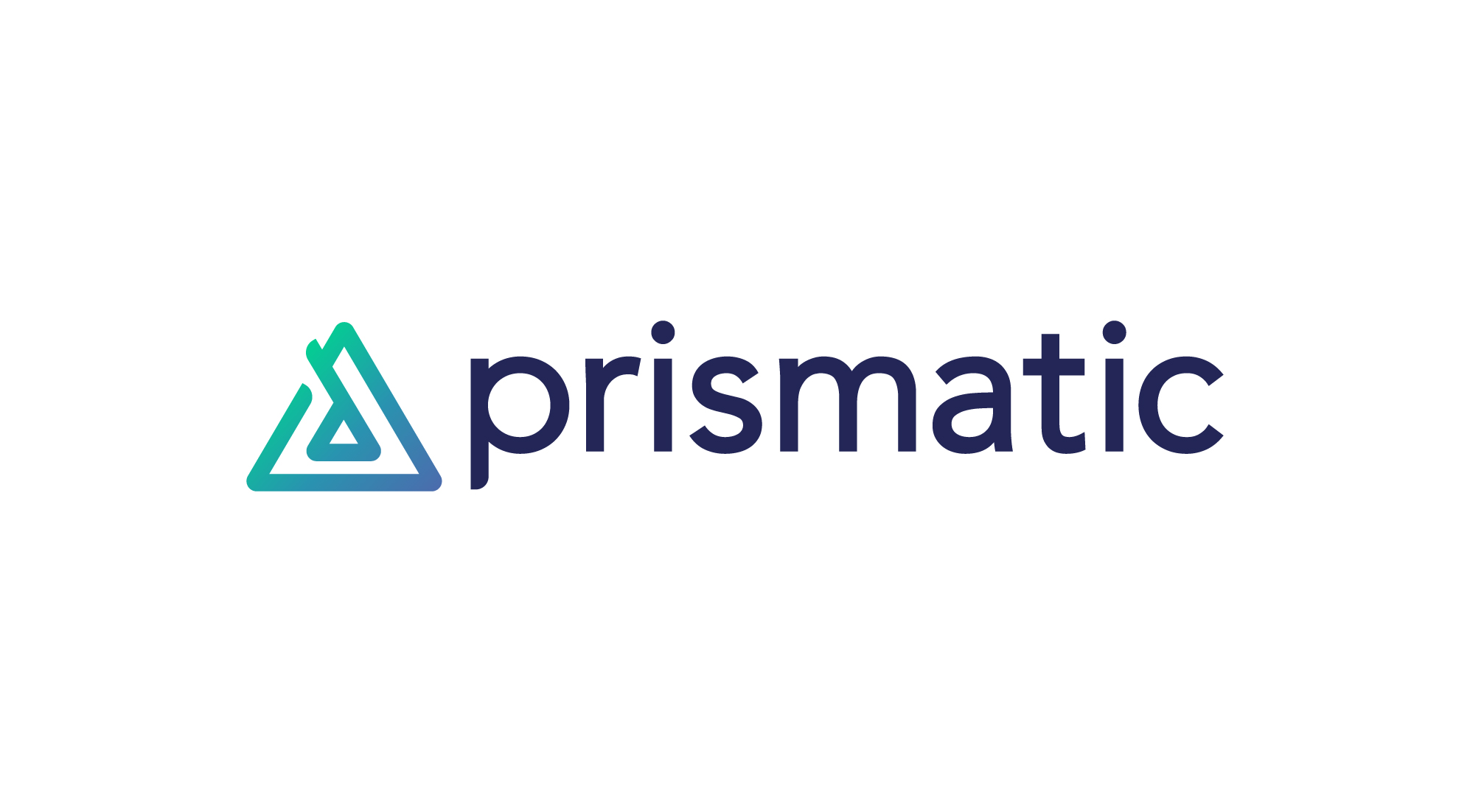Understanding SaaS
Software as a Service (SaaS) is a cloud-based software delivery model that has gained immense popularity in recent years. Unlike traditional software that requires installation on individual devices, SaaS allows users to access and use software applications through the internet.
One of the key advantages of SaaS is its flexibility and scalability. Users can easily scale up or down their usage based on their needs, paying only for what they use. This eliminates the need for upfront investments in software licenses and hardware infrastructure, making SaaS cost-effective for both small startups and large enterprises.
Another benefit of SaaS is the automatic updates and maintenance provided by the service provider. With SaaS, users are always on the latest version of the software, saving them the time and effort of manual updates. Additionally, SaaS vendors take care of the infrastructure, security, and data backups, ensuring a high level of reliability and data protection.
SaaS applications are typically accessed through web browsers, making them accessible from any device with an internet connection. This allows for greater flexibility and remote work capabilities, as users can access their SaaS applications from anywhere at any time.
Furthermore, SaaS offers a wide range of software solutions across various industries and business functions. From customer relationship management (CRM) to project management, human resources, and accounting, there are SaaS applications available for almost every business need.
Despite its many advantages, SaaS does have some considerations to keep in mind. Since the software and data are stored on the cloud, reliance on internet connectivity becomes crucial. Any connectivity issues could disrupt access to the SaaS applications. Additionally, data security and privacy are important concerns, so it is vital to select a reputable SaaS provider that implements robust security measures.
Understanding the fundamentals of SaaS is the first step towards developing your own SaaS product. With its flexibility, scalability, and cost-effectiveness, SaaS has revolutionized the way software is delivered and used. In the following sections, we will explore the steps involved in creating and launching a successful SaaS product.
Defining Your SaaS Idea
Before diving into the development and launch of your SaaS product, it is crucial to define a clear and compelling SaaS idea. The success of your SaaS business depends on the uniqueness and market demand for your idea. Here are the key steps to help you define your SaaS idea.
- Identify a Problem: Start by identifying a problem or pain point that exists in a specific industry or target audience. This could be a tedious task, inefficient process, or a need for automation.
- Research the Market: Conduct thorough market research to understand if there is existing competition and to assess the demand for your SaaS idea. Look for gaps in the market and identify areas where your product can stand out.
- Define Your Unique Selling Proposition (USP): Determine what makes your SaaS idea unique and why customers would choose your product over competitors. This could be a specific feature, a competitive pricing model, or a different approach to solving the problem.
- Validate Your Idea: Validate your SaaS idea by gathering feedback from potential customers, industry experts, or conducting surveys. This will help you refine your idea and ensure there is a market need for your product.
- Create a Value Proposition: Develop a strong value proposition that clearly communicates the benefits and value your SaaS product will bring to customers. This will serve as a foundation for your marketing efforts in the future.
It is essential to spend sufficient time and effort on defining your SaaS idea. A well-defined and compelling idea will attract customers and set you apart from competitors. Ensure that your SaaS idea aligns with your passion and expertise, as building a successful SaaS business requires long-term commitment and dedication.
In the next section, we will discuss the importance of conducting market research to validate your SaaS idea and understand your target market better.
Conducting Market Research
Market research plays a crucial role in the success of your SaaS product. It helps you gain insights into your target market, understand customer needs and preferences, and identify opportunities and challenges. Here are the key steps to conducting effective market research for your SaaS business.
- Identify Your Target Market: Define your target market based on demographics, industry, and specific characteristics. This will help you tailor your product and marketing efforts to the right audience.
- Analyze Competitors: Research and analyze your competitors to understand their offerings, pricing, target audience, and marketing strategies. Identifying their strengths and weaknesses will help you position your SaaS product effectively.
- Conduct Surveys and Interviews: Gather feedback from potential customers through surveys and interviews. Ask questions about their pain points, needs, and preferences related to your SaaS product. This will provide valuable insights to shape your product and marketing strategies.
- Utilize Online Tools: Take advantage of online tools and platforms to collect data and insights about your target market. Social media listening, online forums, and keyword research are a few examples of tools that can help you understand customer sentiment and trends.
- Identify Market Trends: Stay updated with industry trends, technological advancements, and changes in customer behavior. This will help you identify new opportunities and adapt your SaaS product accordingly.
By conducting comprehensive market research, you will have a better understanding of your target market, competitor landscape, and market trends. This information will guide you in developing a SaaS product that meets customer needs and stands out in the market.
In the next section, we will discuss the importance of creating a solid SaaS business plan to lay the foundation for your SaaS product development and launch.
Creating a SaaS Business Plan
A well-crafted business plan is essential for the success of your SaaS venture. It serves as a roadmap that outlines your goals, strategies, and financial projections. Here are the key components to include when creating a comprehensive SaaS business plan.
- Executive Summary: Start with an executive summary that provides an overview of your SaaS business, including your mission, target market, and competitive advantage.
- Market Analysis: Conduct a thorough market analysis to understand the potential size, trends, and dynamics of your target market. Identify your target audience and analyze the competition in that market segment.
- Product Description: Clearly define your SaaS product, its unique features, and how it addresses the needs of your target audience. Explain the benefits it offers and how it stands out from existing solutions.
- Marketing and Sales Strategies: Outline your marketing and sales strategies to attract and acquire customers. Define your target audience, channels, pricing model, and promotional activities.
- Development and Operations: Describe the technical aspects of your SaaS product development, including the technology stack, development timeline, and collaborations with third-party vendors if applicable. Provide information on your hosting and operational requirements.
- Financial Projections: Include financial projections such as revenue forecasts, cost estimations, and a break-even analysis. This will help you understand the financial viability of your SaaS business and attract potential investors.
- Team and Management: Highlight the skills and experience of your team members and outline the roles and responsibilities within the organization. This demonstrates the capability of your team to execute your SaaS business plan.
- Risk Assessment: Identify potential risks and challenges that may arise during the development and implementation of your SaaS product. Develop contingency plans to mitigate these risks.
A well-prepared SaaS business plan will not only help you clarify your goals and strategies but also attract potential investors and stakeholders. It will serve as a reference point throughout the lifecycle of your SaaS business, enabling you to track your progress and make adjustments as needed.
In the next section, we will explore the important factors to consider when building a development team for your SaaS product.
Building a Development Team
The success of your SaaS product heavily relies on the skills and expertise of your development team. Building a dedicated and capable team will ensure effective product development, smooth project management, and timely delivery. Here are the key steps to consider when building your SaaS development team.
- Define Roles and Responsibilities: Clearly define the roles and responsibilities required for your development team. These roles may include front-end and back-end developers, UX/UI designers, project managers, quality assurance testers, and system administrators.
- Assess Technical Skills: Assess the technical skills and experience of potential team members based on your project requirements. Look for individuals with expertise in the programming languages, frameworks, and technologies that will be used in developing your SaaS product.
- Cultural Fit: Consider the cultural fit of potential team members. Look for individuals who align with your company values, work well in a team environment, and have good communication skills.
- Collaboration and Teamwork: Building a cohesive and collaborative team is essential for efficient project management. Look for candidates who have a track record of working in teams and can contribute positively to the overall team dynamics.
- Freelancers vs. In-house Team: Decide whether to hire freelancers or build an in-house development team. Freelancers offer flexibility and specialized skills, while an in-house team provides better control and ongoing collaboration. Consider the needs of your project and budget constraints.
- Training and Skill Development: Provide opportunities for continuous learning and skill development for your development team. This will ensure they stay updated with the latest technologies and industry trends, ultimately enhancing the quality of your SaaS product.
- Communication and Collaboration Tools: Implement effective communication and collaboration tools to facilitate seamless collaboration among team members, especially when working remotely or in different time zones.
- Project Management Methodology: Decide on a project management methodology that suits your development team’s workflow. Agile methodologies such as Scrum or Kanban are often preferred for SaaS development projects.
Building a skilled and cohesive development team is a critical step towards the successful development and launch of your SaaS product. Invest time and effort in recruiting the right individuals who possess the necessary skills, experience, and cultural fit.
In the following section, we will discuss the importance of choosing the right technology stack for your SaaS product development.
Choosing the Right Technology Stack
Selecting the right technology stack is crucial for the development of your SaaS product. The technology stack refers to the combination of programming languages, frameworks, libraries, databases, and other tools used to build your software. Here are the key factors to consider when choosing the technology stack for your SaaS product.
- Product Requirements: Evaluate the specific requirements and functionalities of your SaaS product. Consider factors such as scalability, performance, security, and integrations. Choose technologies that can meet these requirements effectively.
- Development Expertise: Assess the skills and expertise of your development team. Choose technologies that align with their proficiency and experience. This will ensure smoother development and easier troubleshooting.
- Community and Support: Look for technologies with a large and active community. This ensures access to online resources, forums, and support channels. Communities also contribute to the growth and improvement of the technology stack.
- Third-Party Integrations: Consider the need for integrating third-party services or APIs in your SaaS product. Check compatibility and availability of integration options for your chosen technology stack.
- Scalability and Performance: Assess the scalability and performance capabilities of the technologies. Ensure that the chosen stack can handle the expected user load and growth of your SaaS product.
- Security: Verify the security features and protocols provided by the technology stack. Data protection, encryption, and secure authentication mechanisms are essential for the safety of your SaaS product and user data.
- Maintainability: Consider the ease of maintainability and future enhancements. Choose technologies that have good documentation, active maintenance, and consistent updates.
- Budget: Evaluate the cost implications of the technology stack. Factor in licensing fees, development time, and any additional costs associated with the selected technologies.
It’s important to strike a balance between familiar technologies that your development team is comfortable with and selecting the most suitable stack for your product’s requirements. This may require trade-offs and discussions with your team and stakeholders.
By carefully evaluating the requirements and considering the factors mentioned above, you can choose the right technology stack that will enable the successful development and performance of your SaaS product.
In the next section, we will explore the importance of designing an intuitive and visually appealing user interface for your SaaS product.
Designing the User Interface
The user interface (UI) of your SaaS product plays a significant role in attracting and retaining users. A well-designed and intuitive UI enhances the overall user experience, increases user engagement, and sets your product apart from the competition. Here are the key considerations when designing the user interface for your SaaS product.
- Understand User Needs: Gain a deep understanding of your target users’ needs, preferences, and workflows. Conduct user research, interviews, and usability testing to gather valuable insights to inform your design decisions.
- Keep it Simple and Intuitive: Strive for simplicity in design. Keep the user interface clean, uncluttered, and easy to navigate. Use clear and concise language, familiar icons, and logical workflows to guide users through the application.
- Consistency: Maintain consistency in design across all pages and screens of your SaaS product. Use consistent colors, typography, spacing, and UI elements to create a visually cohesive user experience.
- Responsive Design: Ensure your UI is responsive and optimized for different devices and screen sizes. This will provide a seamless experience for users accessing your SaaS product from desktops, laptops, tablets, and smartphones.
- Visual Hierarchy: Use visual hierarchy to prioritize and organize information. Highlight important elements, such as call-to-action buttons or critical information, using appropriate visual cues, such as contrasting colors and size variations.
- Usability Testing: Conduct regular usability testing to gather feedback and identify areas where users may struggle or encounter difficulties. Incorporate the feedback to iterate and improve your UI design.
- Branding and Visual Identity: Reflect your branding and visual identity in the UI design. Use colors, fonts, and visuals that align with your brand’s personality and values.
- Accessibility: Ensure your UI design is accessible to users with disabilities. Consider factors such as legibility, color contrasts, keyboard navigation, and screen reader compatibility.
- Microinteractions: Incorporate subtle and delightful microinteractions, such as animations or tooltips, to enhance the user experience. These small details can make the overall interaction with your SaaS product more engaging and enjoyable.
Remember, designing the user interface is an iterative process. Continuously gather feedback from users and make incremental improvements to the UI based on their needs and preferences.
In the next section, we will delve into the development of the backend for your SaaS product.
Developing the Backend
The development of the backend is a critical component of building your SaaS product. The backend is responsible for handling data processing, business logic, and integration with external services. Here are the key steps to consider when developing the backend for your SaaS product.
- Choose a Framework or Language: Select a backend framework or programming language that aligns with the requirements of your SaaS product. Consider factors such as scalability, community support, and your development team’s expertise.
- Database Design: Design a database schema that efficiently stores and manages your application’s data. Consider the relationships between different data entities and the performance requirements of your SaaS product.
- Implement APIs: Develop a robust set of Application Programming Interfaces (APIs) that allow interaction between the frontend and the backend. APIs facilitate data retrieval, modification, and integration with external systems or services.
- Secure Data Handling: Implement security measures to protect user data and sensitive information. This may include encryption, secure authentication, and data privacy compliance measures.
- Implement Business Logic: Develop the core business logic for your SaaS product. This includes logic for user authentication, authorization, data processing, workflows, and any other specific functionalities.
- Integration with Third-Party Services: Integrate your backend with external services or APIs that complement your SaaS product. This may include payment gateways, email services, or cloud storage providers.
- Scalability and Performance Optimization: Engineer your backend to handle the expected user load and future scalability requirements. Implement caching, load balancing, and database optimization techniques to improve overall performance.
- Monitoring and Error Handling: Implement robust monitoring and error handling mechanisms to track and resolve issues. Use logging tools and analytics to gain insights into the performance and usage patterns of your SaaS product.
- Documentation: Create comprehensive documentation for your backend code and APIs. This will ensure clear communication and facilitate future development or maintenance tasks.
Collaboration between the backend and frontend teams is crucial to ensure seamless integration and a smooth user experience. Regular communication and a shared understanding of the system architecture are important for successful backend development.
In the next section, we will discuss the importance of implementing security measures to protect your SaaS product and user data.
Implementing Security Measures
Implementing robust security measures is a vital aspect of developing your SaaS product. It is crucial to ensure the protection of user data, maintain data privacy, and safeguard your product from potential threats. Here are the key security measures to consider when building your SaaS product.
- User Authentication and Authorization: Implement a secure user authentication system to verify user identities. This may include password hashing, multi-factor authentication, and session management. Additionally, implement role-based access control to ensure authorized access to different features or data within your SaaS product.
- Data Encryption: Use encryption techniques to protect sensitive user data, both at rest and during transmission. Implement industry-standard encryption algorithms when storing data in databases and when transmitting data over networks.
- Secure API Design: Follow secure API design practices to prevent unauthorized access to your backend systems. Use tokens or API keys for authentication and implement rate limiting to mitigate potential abuse or misuse of your APIs.
- Vulnerability Scanning and Testing: Regularly scan for vulnerabilities in your SaaS product using automated tools and perform penetration testing to identify potential security weaknesses. Address any identified vulnerabilities promptly to ensure the security of your product.
- Data Privacy Compliance: Ensure compliance with relevant data privacy regulations, such as the General Data Protection Regulation (GDPR) or the California Consumer Privacy Act (CCPA). Implement privacy policies and provide users with transparent information about how their data is collected, stored, and used.
- Secure Development Practices: Adopt secure coding practices and follow industry best practices for secure development. This includes properly validating user input, avoiding common vulnerabilities such as SQL injection and cross-site scripting (XSS), and keeping dependencies up to date to address known security vulnerabilities.
- Regular Software Updates and Patching: Stay vigilant about applying software updates and security patches for your SaaS product and its underlying technologies. Regularly monitor security advisories and address any known vulnerabilities promptly.
- Security Training and Awareness: Educate your development team and employees about security best practices and potential threats. Promote a security-conscious culture within your organization, emphasizing the importance of data protection and proactive security measures.
Implementing robust security measures is crucial not only for protecting your SaaS product and user data but also for building trust with your customers. Prioritize security throughout the development process and regularly audit and update your security measures as technology and threat landscapes evolve.
In the next section, we will delve into the importance of testing and quality assurance for your SaaS product.
Testing and Quality Assurance
Testing and quality assurance are essential components of the development process for your SaaS product. Thorough testing ensures that your product is free from bugs, functions as intended, and provides a seamless user experience. Here are the key aspects to consider when conducting testing and quality assurance for your SaaS product.
- Unit Testing: Perform unit testing to test individual components and modules of your SaaS product. This helps identify and fix any functionality or logic issues at an early stage.
- Integration Testing: Conduct integration testing to ensure that different components of your SaaS product work together seamlessly. Test data flow and communication between different modules or services.
- Functional Testing: Test the functionality of your SaaS product against the defined requirements. Ensure that all features and functionalities work as expected, including user interactions, data manipulation, and system responses.
- Usability Testing: Evaluate the user-friendliness and intuitiveness of your SaaS product through usability testing. Obtain feedback from users to identify potential issues and improve the user experience.
- Performance Testing: Assess the performance and scalability of your SaaS product, especially under expected user loads. Measure response times, resource usage, and system stability to ensure optimal performance.
- Security Testing: Conduct comprehensive security testing to identify vulnerabilities and weaknesses. Test for common security vulnerabilities such as injection attacks, cross-site scripting (XSS), and cross-site request forgery (CSRF).
- Compatibility Testing: Test your SaaS product across different browsers, operating systems, and devices to ensure compatibility and a consistent experience for users.
- Automated Testing: Implement automated testing frameworks and tools to streamline the testing process and improve efficiency. Automated tests can be run repeatedly, allowing for faster regression testing and reducing the risk of human error.
- Continuous Testing: Implement a continuous testing process, integrating testing into your development workflow. This promotes early bug detection, allows for rapid feedback, and ensures a high level of product quality throughout the development lifecycle.
Testing and quality assurance should not be viewed as a separate phase but rather integrated into the entire development process. Regularly evaluate and refine your testing approach to ensure the delivery of a robust, reliable, and high-quality SaaS product.
In the next section, we will explore the crucial steps involved in launching your SaaS product to the market successfully.
Launching Your SaaS Product
Launching your SaaS product is an exciting milestone that marks the culmination of your hard work and preparation. A successful launch is crucial for gaining traction, attracting customers, and establishing your presence in the market. Here are the key steps to consider when launching your SaaS product.
- Refine Your Product: Prioritize feedback and make necessary improvements to your SaaS product based on user testing and market insights. Ensure that your product meets the needs and expectations of your target audience.
- Create a Marketing Strategy: Develop a comprehensive marketing strategy to generate awareness and interest in your SaaS product. Identify your target audience, define your unique selling propositions, and determine the most effective marketing channels and tactics.
- Build an Engaging Website: Create a visually appealing and informative website that showcases your SaaS product. Clearly communicate the value it offers, highlight its features, and provide compelling calls-to-action to encourage sign-ups or trials.
- Pricing and Packaging: Determine the most suitable pricing models and packages for your SaaS product. Consider factors such as your target market, competitors’ pricing, and perceived value, and clearly communicate your pricing structure on your website.
- Prepare Sales and Support Channels: Set up your sales and support channels to handle inquiries, demos, and customer onboarding. Train your sales team to effectively communicate the value of your product and provide exceptional customer service.
- Establish Analytics and Monitoring: Implement analytics tools and tracking mechanisms to gather data and insights about user behavior, conversions, and overall product performance. Monitor key metrics to measure the success of your launch and identify areas for improvement.
- Soft Launch and Gather Feedback: Consider a soft launch initially to a limited audience or beta users. This allows you to test your product in the real world and gather valuable feedback to make any necessary refinements before a full-scale launch.
- Generate Buzz and PR: Generate excitement and buzz around your SaaS product through PR efforts, press releases, content marketing, social media engagement, and collaborations with influencers or industry experts.
- Offer Trials and Promotions: Consider offering free trials or promotions to entice potential customers to try your SaaS product. Provide discounts or exclusive offers to early adopters as a way to build a user base and generate positive word-of-mouth.
- Solicit and Share Customer Testimonials: Collect testimonials and positive reviews from satisfied customers. Share these success stories on your website and other marketing channels to build trust and credibility.
A successful launch requires careful planning, effective marketing strategies, and excellent product execution. Continuously monitor and adapt your launch strategies based on user feedback and market response to ensure sustained growth and success.
In the next section, we will discuss the importance of continuous improvement and updates for your SaaS product.
Continuous Improvement and Updates
Launching your SaaS product is just the beginning of your journey. To stay competitive and meet evolving customer needs, continuous improvement and regular updates are crucial. Here are the key reasons why continuous improvement and updates are essential for your SaaS product.
- User Feedback and Iteration: Actively seek user feedback and incorporate it into your product development process. Use feedback to identify areas for improvement, fix bugs, and add new features that align with user expectations.
- Market Trends and Competitor Analysis: Stay informed about market trends and changes in the competitive landscape. Continuously analyze your competitors’ offerings to identify ways to differentiate your product and stay ahead of the curve.
- Adaptation to User Needs and Technology: Users’ needs and technological advancements evolve over time. Continuously monitor user behavior, gather data, and adapt your product to meet changing demands and leverage emerging technologies.
- Performance Optimization: Regularly assess and optimize the performance of your SaaS product. Address bottlenecks, improve response times, and optimize resource utilization to enhance the user experience and maintain a competitive edge.
- Security Maintenance and Updates: With the ever-evolving threat landscape, it is crucial to proactively address security vulnerabilities. Regularly update security measures, patch vulnerabilities, and stay abreast of industry best practices to ensure ongoing protection of user data.
- Enhanced User Experience: Aim to continuously enhance the user experience of your SaaS product. Refine the user interface, streamline workflows, and incorporate user-centric design principles to ensure user satisfaction and retention.
- Feature Expansion: Regularly add new features and enhancements to your SaaS product to provide value to existing customers and attract new ones. Prioritize features based on user feedback, market demand, and your product roadmap.
- Upselling and Cross-selling Opportunities: Use updates and improvements as opportunities to upsell or cross-sell additional features or packages to existing customers. This helps increase revenue and deepen customer engagement.
- Customer Retention and Loyalty: Continuous improvement and updates contribute to long-term customer retention. By demonstrating that you are actively working to enhance your product, you build trust and loyalty with your customers.
By regularly incorporating user feedback, analyzing market trends, and adapting to technological advancements, you can ensure that your SaaS product remains relevant, competitive, and provides ongoing value to your customers. Continuously strive for improvement to maintain customer satisfaction and stay ahead of the competition.
In the next section, we will explore the importance of marketing and customer acquisition strategies for your SaaS product.
Marketing and Customer Acquisition
Effective marketing and customer acquisition strategies are essential for the success of your SaaS product. By reaching and engaging your target audience, you can generate interest, convert leads into customers, and foster long-term relationships. Here are the key considerations for marketing and acquiring customers for your SaaS product.
- Identify Your Target Audience: Define your target audience based on demographics, industry, and specific characteristics. This helps you tailor your marketing efforts and messages to resonate with the right audience.
- Create a Strong Brand Identity: Develop a compelling brand identity that reflects the value and personality of your SaaS product. Use consistent branding elements across all marketing channels to build brand recognition and trust.
- Develop a Comprehensive Marketing Strategy: Create a detailed marketing strategy that encompasses various channels and tactics. This may include content marketing, social media marketing, email marketing, paid advertising, search engine optimization (SEO), and influencer partnerships.
- Content Marketing: Produce high-quality content that provides value to your target audience. This includes blog posts, whitepapers, eBooks, videos, tutorials, and case studies. Share this content through your website, social media channels, and email newsletters to attract and engage potential customers.
- Social Media Marketing: Leverage social media platforms to build brand awareness, engage with your audience, and drive traffic to your website. Choose the platforms that align with your target audience and actively participate in relevant communities and discussions.
- Email Marketing: Build an email list and create targeted email campaigns to nurture leads, communicate product updates, and promote special offers. Personalize your emails based on user preferences and behavior to increase engagement and conversion rates.
- Paid Advertising: Utilize paid advertising channels, such as Google Ads or social media ads, to reach your target audience and drive traffic to your website. Monitor and optimize your campaigns to maximize ROI and attract qualified leads.
- Search Engine Optimization (SEO): Optimize your website and content to improve your search engine rankings. Conduct keyword research, optimize on-page elements, and build high-quality backlinks to increase organic traffic and visibility.
- Influencer Partnerships: Collaborate with influencers or industry experts who have a relevant audience. Engage in sponsored content, guest blogging, or social media takeovers to tap into their followers’ networks and extend your reach.
- Referral Programs and Word-of-Mouth: Encourage satisfied customers to refer your SaaS product to their networks. Implement referral programs and provide incentives for successful referrals to leverage the power of word-of-mouth marketing.
Continuous monitoring, tracking, and analysis of your marketing efforts are important to optimize your strategies and allocate resources effectively. Test different channels and messages to identify what resonates best with your target audience.
Remember, acquiring customers is just the first step. Providing exceptional customer experiences, delivering on your promises, and fostering long-term relationships are key to customer retention and business growth.
In the following section, we will discuss the importance of providing ongoing support and maintenance for your SaaS product.
Providing Ongoing Support and Maintenance
Once you have acquired customers for your SaaS product, it is crucial to provide ongoing support and maintenance to ensure their satisfaction and loyalty. Keeping your product running smoothly and resolving customer issues in a timely manner are key to long-term success. Here are the key considerations for providing ongoing support and maintenance for your SaaS product.
- Establish Support Channels: Set up multiple support channels, such as email, live chat, and a dedicated support portal. Make it easy for customers to reach out for assistance and provide prompt responses to their inquiries.
- Responsive Customer Support: Ensure your customer support team is responsive, knowledgeable, and empathetic. Train your support team to efficiently address customer concerns, provide helpful guidance, and escalate issues when necessary.
- Self-Service Resources: Develop a comprehensive knowledge base, FAQs, video tutorials, and user guides to empower customers to find answers to common questions and troubleshoot issues on their own. Regularly update these resources to address new features or updates in your product.
- Bug Fixes and Patch Updates: Continuously monitor your SaaS product for bugs and issues. Promptly address and fix any identified bugs or vulnerabilities through regular software updates and patches. Keep customers informed about these updates and the benefits they provide.
- Proactive Monitoring and Performance Optimization: Implement proactive monitoring tools to identify performance issues, bottlenecks, or potential system failures. Regularly analyze performance metrics and optimize your infrastructure and codebase to ensure optimal performance and minimize downtime.
- Collect and Act on Customer Feedback: Gather feedback from your customers about their experiences, pain points, and suggestions for improvement. Use this feedback to prioritize feature enhancements, address usability issues, and provide the best possible user experience.
- Regular Communication and Updates: Keep customers informed about new features, updates, and improvements. Send out regular newsletters, product updates, or release notes to engage with your customers and showcase the value they can derive from your SaaS product.
- Release Management: Implement a structured release management process to ensure smooth deployment of new features or updates. Conduct thorough testing before each release to minimize the likelihood of issues impacting your customers.
- Customer Success Programs: Develop customer success programs to proactively engage with customers and help them achieve their desired outcomes with your SaaS product. Provide personalized onboarding, training, and tailored support to ensure their success and maximize the value they derive from your product.
Providing ongoing support and maintenance is crucial for customer satisfaction and retention. By prioritizing customer needs, promptly addressing their concerns, and continuously improving your product, you can establish a strong reputation and build long-lasting relationships with your customers.
In the next section, we will discuss the importance of scaling your SaaS business and preparing for growth.
Scaling Your SaaS Business
Scaling your SaaS business is crucial for accommodating growth, maximizing revenue, and staying competitive in the market. As your customer base expands, it is essential to scale your operations, technology infrastructure, and team to meet increasing demand. Here are key considerations for scaling your SaaS business.
- Scalable Infrastructure: Assess your technology infrastructure and ensure it can handle increased user traffic and data volumes. Consider cloud-based solutions that offer scalability, flexibility, and high availability to accommodate growing customer demand.
- Automated Processes: Implement automation in various aspects of your operations, such as customer onboarding, billing, and support ticketing. Automation reduces manual efforts, improves efficiency, and allows you to scale without significant increases in resources.
- Continuous System Monitoring: Implement robust monitoring tools to proactively identify and address any performance bottlenecks, security threats, or system failures. This ensures high system availability and minimizes disruption to your customers.
- Expand Your Team: Hire additional team members to support business growth. This may include developers, customer support representatives, sales and marketing professionals, and operations personnel. Build a team that aligns with your company culture and shares your vision for scaling the business.
- Streamline Sales and Onboarding: Optimize your sales and onboarding processes to handle increased customer volume efficiently. Implement sales enablement tools, streamline contract management, and provide self-service onboarding resources to accelerate the customer acquisition process.
- Customer Retention: Place emphasis on retaining existing customers while acquiring new ones. Implement customer success programs, deliver ongoing value, and nurture long-term relationships. Satisfied and loyal customers contribute to sustainable revenue and positive word-of-mouth.
- Partnerships and Integrations: Explore strategic partnerships with other SaaS providers or complementary services to expand your market reach and offer additional value to customers. Integrations with popular platforms and tools can help attract new customers and increase customer stickiness.
- Invest in Marketing: Increase your marketing efforts to reach a wider audience and generate more leads. Fine-tune your marketing strategies based on data and insights, leveraging a mix of digital marketing channels, content marketing, SEO, and targeted campaigns to drive growth.
- Monitor Key Metrics: Track and analyze key performance indicators (KPIs) to measure business growth and success. Monitor metrics such as customer acquisition cost (CAC), customer lifetime value (CLTV), churn rate, and revenue growth to guide your scaling strategies.
- Adapt and Innovate: Continuously adapt to emerging market trends and customer needs. Encourage innovation within your team and foster a culture that embraces change. Stay agile and respond quickly to market shifts to maintain a competitive edge.
Scaling your SaaS business requires careful planning, strategic investments, and the right people and processes in place. With a focus on customer value, operational efficiency, and continuous improvement, you can successfully scale your SaaS business and position yourself for long-term growth and success.
In the final section, we will summarize the key points and restate the importance of a comprehensive approach in developing and growing your SaaS product.
Conclusion
Developing and growing a successful SaaS product requires a comprehensive approach that encompasses various stages and considerations. From understanding the fundamentals of SaaS to refining your idea, conducting market research, and creating a solid business plan, each step is crucial to the success of your product.
Building a skilled development team, choosing the right technology stack, and designing an intuitive user interface are essential for creating a robust and user-friendly SaaS product. Implementing security measures, conducting thorough testing and quality assurance, and providing ongoing support and maintenance are vital for ensuring the security, reliability, and satisfaction of your customers.
Marketing your SaaS product effectively, acquiring customers, and focusing on customer success and retention are key to establishing a strong market presence and driving sustainable growth. Scaling your business, adaptability to market trends, and continuous improvement through feedback and innovations are essential for long-term success and staying ahead of the competition.
By following these guidelines and considering the important factors at each stage, you can increase your chances of developing a successful and profitable SaaS product. Remember, the journey does not end with the launch but requires ongoing dedication and a commitment to delivering value to your customers.
Taking a comprehensive approach throughout the development and growth of your SaaS product will position you for success in this dynamic and ever-evolving industry.







